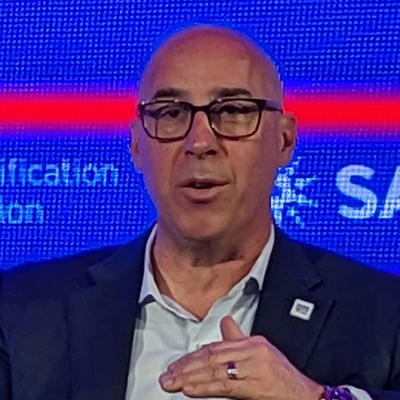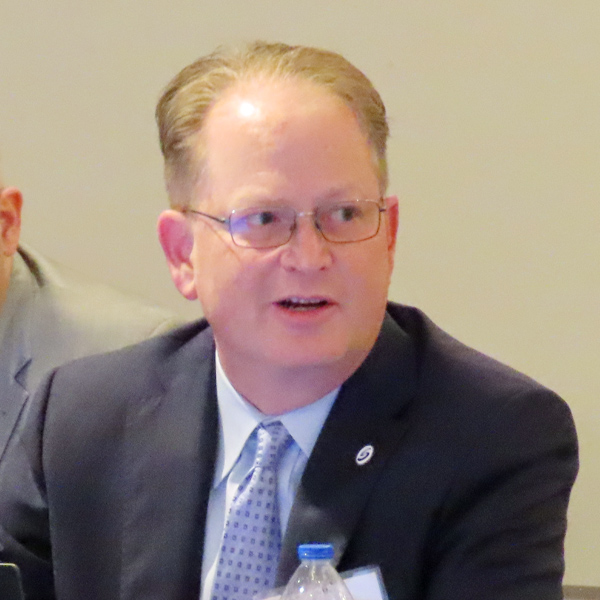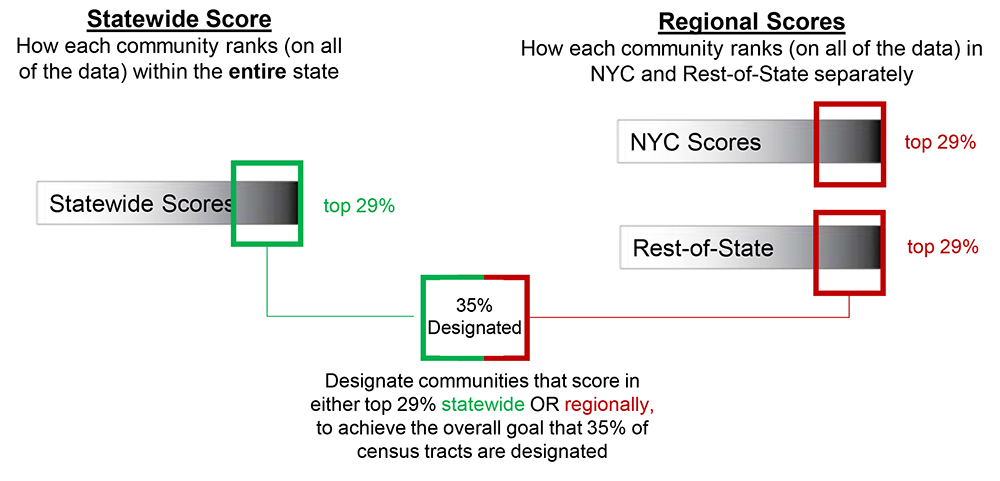WASHINGTON ― The Biden administration will deliver long-awaited guidelines for the domestic content provisions of the Inflation Reduction Act’s electric vehicle tax credits by Friday, White House Senior Adviser John Podesta told a packed ballroom at the SAFE Summit on Tuesday.
The administration has also threatened to veto H.R. 1, a Republican energy package that could roll back certain provisions of the IRA, Podesta said during a “fireside chat” with Robbie Diamond, CEO of SAFE (formerly called Securing America’s Future Energy). But the White House still hopes to work across the aisle for bipartisan legislation to streamline and accelerate permitting of energy projects.
Podesta’s top-line pronouncements kicked off the two-day summit, which focused on a “minerals to markets” analysis of U.S. efforts to end its dependence on China for the critical minerals and battery components needed to decarbonize the U.S. transportation sector, which pumps out 27% of the country’s greenhouse gas emissions. President Biden wants 50% of all new passenger vehicle sales to be EVs by 2030.
But the domestic content provisions, written into the IRA by Sen. Joe Manchin (D-W.Va.), are complicated and “very technically challenging … to implement,” Podesta said. Under the law, the Treasury Department was supposed to issue the guidelines by Dec. 31 but pushed the release back to March.
The 30D tax credit, as it is officially known, provides consumer incentives of up to $7,500 for the purchase of a new EV. The two-part credit includes $3,750 for EVs assembled in North America and another $3,750 “based on the whether the minerals [in the EV battery] are produced or processed in North America or a free-trade country,” Podesta said.
Specifically, the law requires that 40% of the value of critical minerals in an EV battery — such as lithium, cobalt and nickel — be produced and processed in North America or a free-trade country, while 50% of the value of other battery components must be similarly sourced, with the percentages increasing annually.
The law also contains a $4,000 tax credit for the purchase of a used EV, similarly, split in two.
What this means, Podesta said, is that “in the near term, auto companies are kind of scrambling to meet the terms of the credit. But over the very near term, I think we’ll see both the supply chain and the production of electric batteries [and] vehicles in the United States happening quickly. And so I’m very optimistic that this program will deliver on its promise to get people into electric vehicles.”
The Biden administration may also have found a workaround for the domestic content provisions, with its announcement on Tuesday of a new agreement with Japan on critical minerals. The agreement “memorializes the shared commitment of the United States and Japan with respect to the critical mineral sector to facilitate trade, promote fair competition and market-oriented conditions for trade in critical minerals,” according to a press release from the U.S. Trade Representative.
The IRA has a very vague definition of what constitutes the kind of free-trade agreement that will qualify a foreign automakers’ EVs for the tax credit, and Biden and Ursula von der Leyen, president of the European Commission, recently agreed to work on a similar agreement for the EU.
Permit Twice as Fast
Building out that supply chain — which will require opening new mines, processing plants and other factories — will also mean cutting down the sometimes decades-long time frames needed to permit such projects, Podesta said. For example, he said, getting to Biden’s goal of 50% EV sales by 2030 will increase electricity demand and the need for high-voltage DC transmission.
“We need to increase our high-voltage, high-performance transmission in the electric sector by 60% by 2030,” Podesta said. “In order to do that, we need to permit twice as fast as we’ve been permitting, maybe even faster than that, quite frankly. … It’s a tremendous bottleneck, both [having] the ability to build high-voltage transmission as well as the problems of interconnection, of [a] balkanized grid.”
Biden supported a Manchin-proposed bill aimed at improved permitting, which died on a 47-47 vote in the Senate in December. Republican opposition was more political than based on “substance of what was in the legislation,” Podesta said. “It would have been very helpful. … It was a balanced bill that dealt with energy security.” (See Manchin Permitting Bill Falls Short in Senate.)
On the other hand, Podesta slammed H.R. 1, the Republican energy bill now in the House of Representatives, which, he said, “has nothing that deals with these clean energy challenges.”
Dubbed the Lower Energy Costs Act, the GOP bill would repeal “several very important provisions in the Inflation Reduction Act, particularly those oriented towards providing support for middle- and low-income Americans,” he said. “It’s got some very dubious environmental giveaways, including exposing workers to hydrochloric acid.”
The bill’s provisions on permitting are largely focused on changes to the National Environmental Policy Act and oil and gas permitting. (See Republicans’ Opening on Permitting Is Missing Electric Tx.)
Debate on H.R. 1 is ongoing in the House, where Republican leaders may attempt to turn some of the bill’s provisions into bargaining chips in negotiations over raising the debt ceiling, according to a report in The Hill. While the bill could pass in the House on a party-line vote, it will likely die in the Senate. Even so, “we’ve issued a veto threat,” Podesta said.
With energy policy increasingly divisive and politicized, Podesta said, Biden is not waiting on Congress to advance his clean electricity and transportation agendas.
On the permitting front, “we’ve reorganized the White House to create a permanent council amongst the cabinet secretaries,” he said. “I’ve served in in three White Houses. I have never seen the top tier of political appointees pay attention to individual permitting decisions. That’s always well down; things get stuck, they drift.
“No one sort of gets in and unties the knot, [but] the president is demanding action from us, and we’re going try to produce that,” he said.
Tax Credit Pushback
The IRA’s EV tax credits have had a bumpy path to implementation as consumers and car dealers alike try to untangle the law’s limits not only on domestic content but on consumer income and EV prices. To qualify for the credit, the manufacturer’s suggested retail price for a light-duty passenger vehicle cannot exceed $55,000. The limit for SUVs and pickups is $80,000.
The income limits are $150,000 per year for individuals, $225,000 for single heads of house and $300,000 for couples filing joint tax returns. The Treasury Department issued the guidelines for these requirements in December.
The delay on guidelines for the domestic content provisions was widely seen as a result of the pushback from U.S. allies in Europe and Asia, who argued that the requirements were exclusionary and would draw investment away from their markets to the U.S.
Speaking at the Washington, D.C. Auto Show in January, Stavros Lambrinidis, the European Union’s ambassador to the U.S., warned against a “subsidy war” between the U.S. and Europe. (See Tracking the Contradictions of the US EV Market at the DC Auto Show.)
“At the end of the day, if we’re going to be reaching our climate goals, we need to have consumers being able to select the cars they prefer from all the available options among countries that compete fairly in trading,” Lambrinidis said. “And if we cut that off, what you have is probably cars that cost more … so we basically undermine our capacity to meet our climate goals.”
With domestic content provisions on hold, Treasury has allowed qualifying consumers to claim the full $7,500 tax credit on EVs bought since Jan. 1, provoking an angry reaction from Manchin. Taking to the Senate floor, he made an unsuccessful bid for a quick vote on a bill that would have forced Treasury to immediately implement the domestic content provisions. (See IRA’s EV Tax Credits Spark Senate Debate.)
 Jeffrey Morrison, vice president for global purchasing and supply chain at GM | © RTO Insider LLC
Jeffrey Morrison, vice president for global purchasing and supply chain at GM | © RTO Insider LLC
But some U.S. automakers began thinking about domestic supply chains well before passage of the IRA, said Jeffrey Morrison, vice president of global purchasing and supply chains for General Motors, during his fireside chat with David Shepardson of Reuters.
The law is “completely aligned with what we’re trying to do,” Morrison said. “We had this strategy, probably a year or a year and a half before the IRA came out. We knew that the capacity we needed wasn’t there. We had to build new capacity, and we wanted to have a more resilient value chain … than what exists today. So, we were already on a path of how do we look at critical minerals and all the chemical processing that’s required to make battery components and battery cells and how do we rebuild that.”
GM is working with companies in “allied countries;” for example, its partnership with Korea’s LG Energy Solution (LGES) to produce the Ultium battery packs for its electric models. The two companies in December announced plans to expand a production facility in Tennessee, and LGES just announced expanded plans for an Arizona battery plant. (See LG Energy Solution Quadruples Size of Ariz. Factory Plan.)
The IRA’s tax credits, domestic content provisions and all, are “wind in our sails,” Morrison said. “The challenge really is how do you pick the right partners? And then how do you execute as fast as you possibly can to get there with what ends up being major industrialization projects?”

